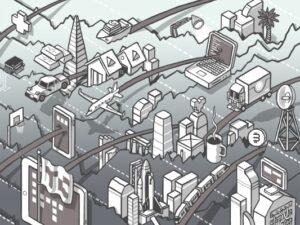On the one hand, 2020 Covid-19 lockdowns impacted our way of living and working. Consequently, air pollution decreased in cities, and global emissions went down seven percent. Unfortunately, without a system-wide change, these reductions are merely temporary. Emissions levels are expected to creep back up as the economy comes alive again. But sustainability and climate change have never been more in focus. In the past few years, climate change grew in importance in customers’ minds and has become a serious issue in the political arena. Learn about sustainable trends in business in our current world by reading below.
Eco-Designed Products
Consumers understand that they can play a role in the pending environmental crisis that surrounds our planet. A study by NYU Stern notes that while sustainable products only make up 16 percent of the marketplace, they delivered 54 percent growth. Moreover, consumers are willing to pay a significant price premium for sustainable products over non-sustainable products. Younger generations are more likely to buy sustainably marketed products. The shift in consumer values and ideals matches a new wave of sustainability products that match conventional goods’ quality and performance. This trend offers an opportunity for fast movers and will leave others behind.
Adopting Green Investments
Today’s investment community is riding a wave of growing interest in sustainable companies. As companies’ sustainability journeys continue to evolve, so too do investor reactions. Many firms are avoiding investments that that present a high-sustainability-related risk in companies. Governments are moving toward mandatory climate risk disclosure as part of a new set of regulations to finance sustainable growth and support a low carbon economy. In addition to pressure from consumers and investors, companies now face legislative pressure as well.
Renewable Energy Costs Down
The world relies on power and fossil fuels because, in the past, they were far less expensive than other sources. However, wind and solar plants became 70 percent and 89 percent cheaper over the last ten years, and their capacity will exceed coal in five years. In fact, solar power has become the least expensive electricity in history below coal. The incredible green electricity price advantage vs. fossil fuel power will accelerate the electrification of heat production in the manufacturing process, for example. In the same vein, many manufacturers and fabricators are switching to electricity as opposed to emission-emitting machinery.
Companies need to address their current pitfalls by making goals that are public and measurable. Achieving these goals should be integrated into performance goals and compensation at individual and team levels. With the influx of consumers looking for sustainable and green products, it only makes sense that companies and manufacturers would be striving to achieve new levels of sustainability. Hopefully, these sustainability trends in business have informed you how the business world is coming around to sustainability and the advances that have already been made.










